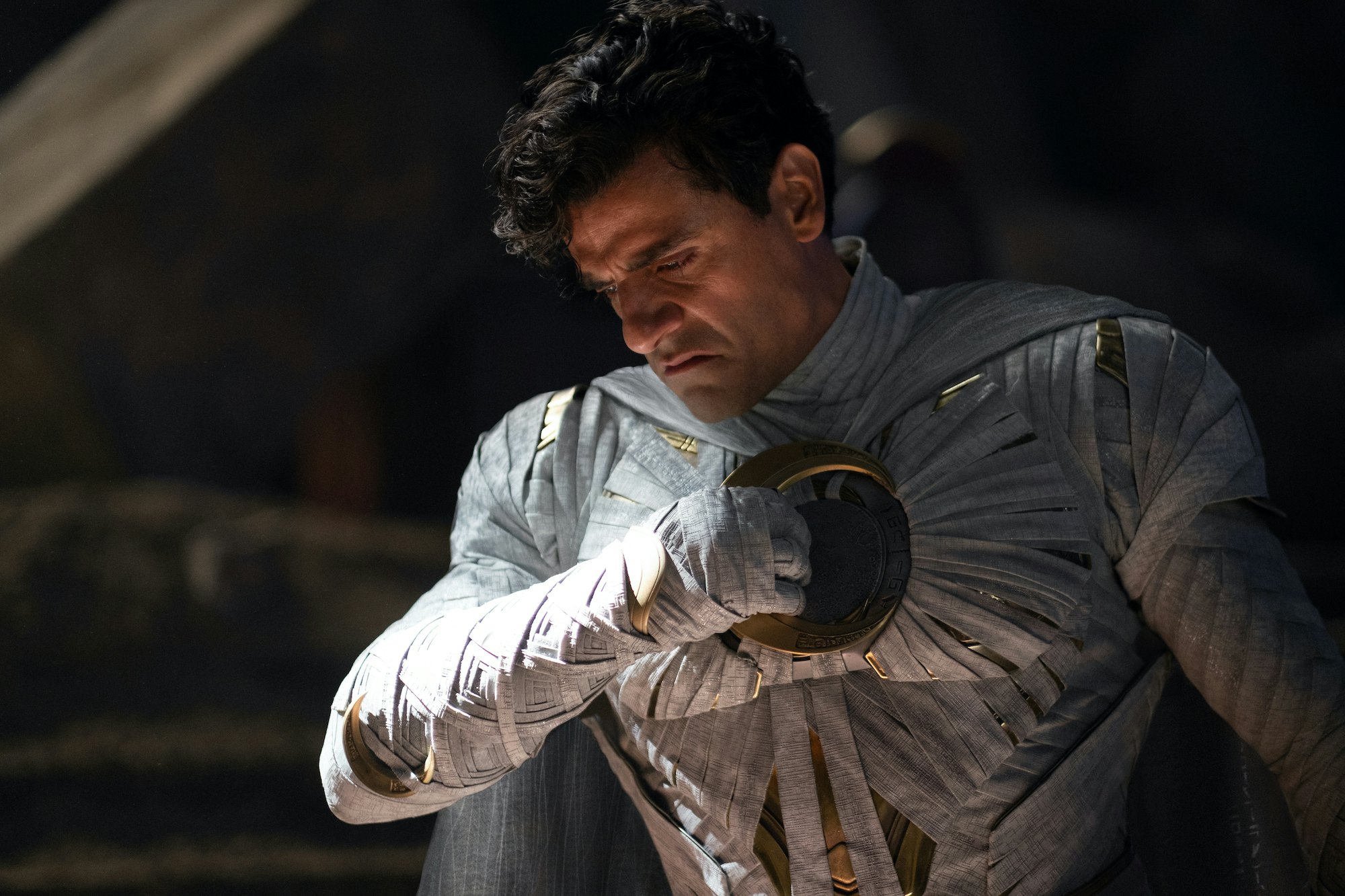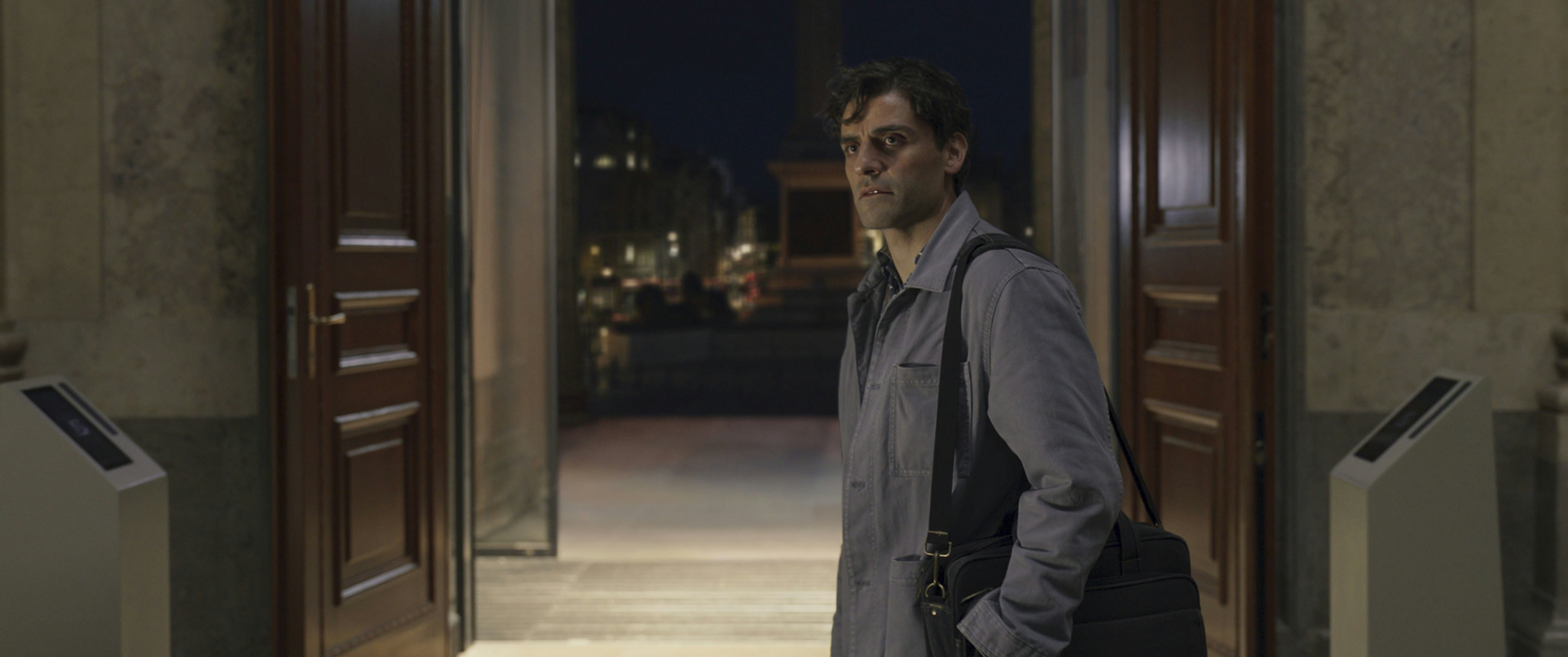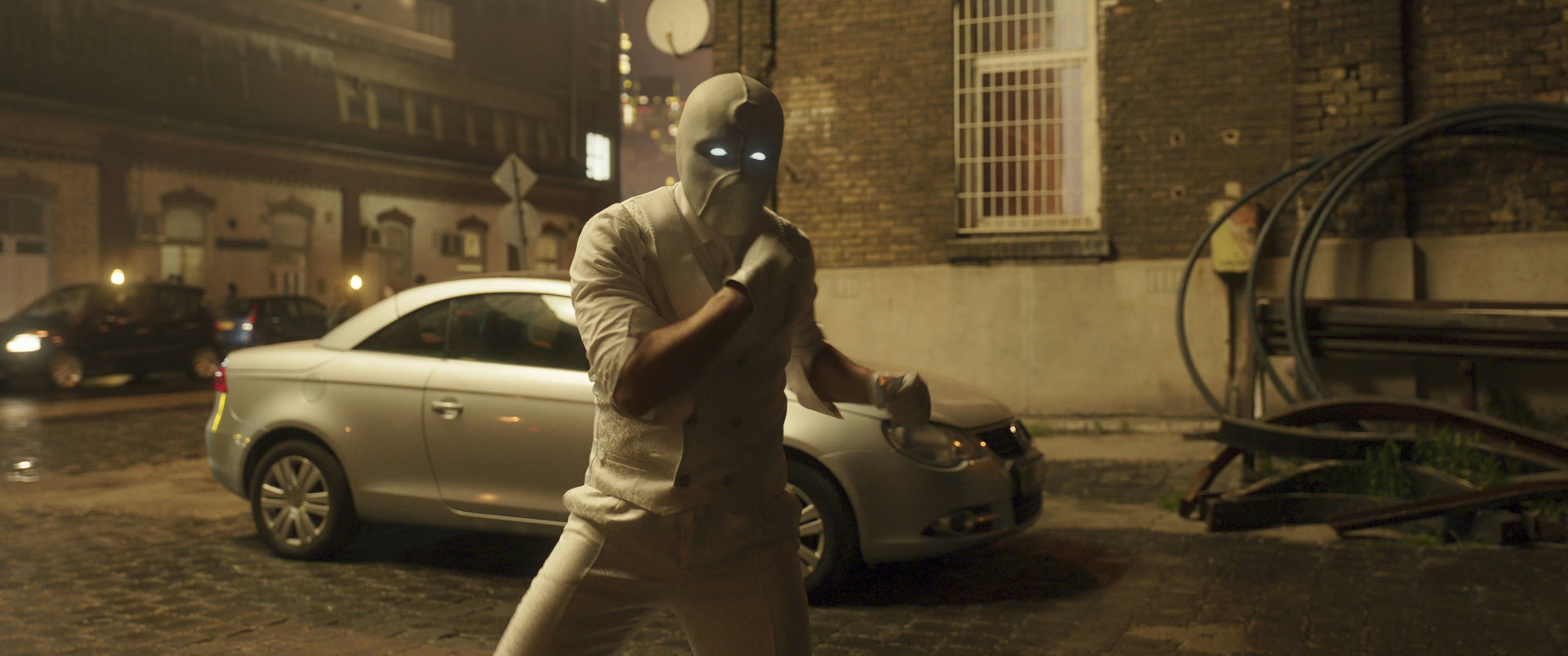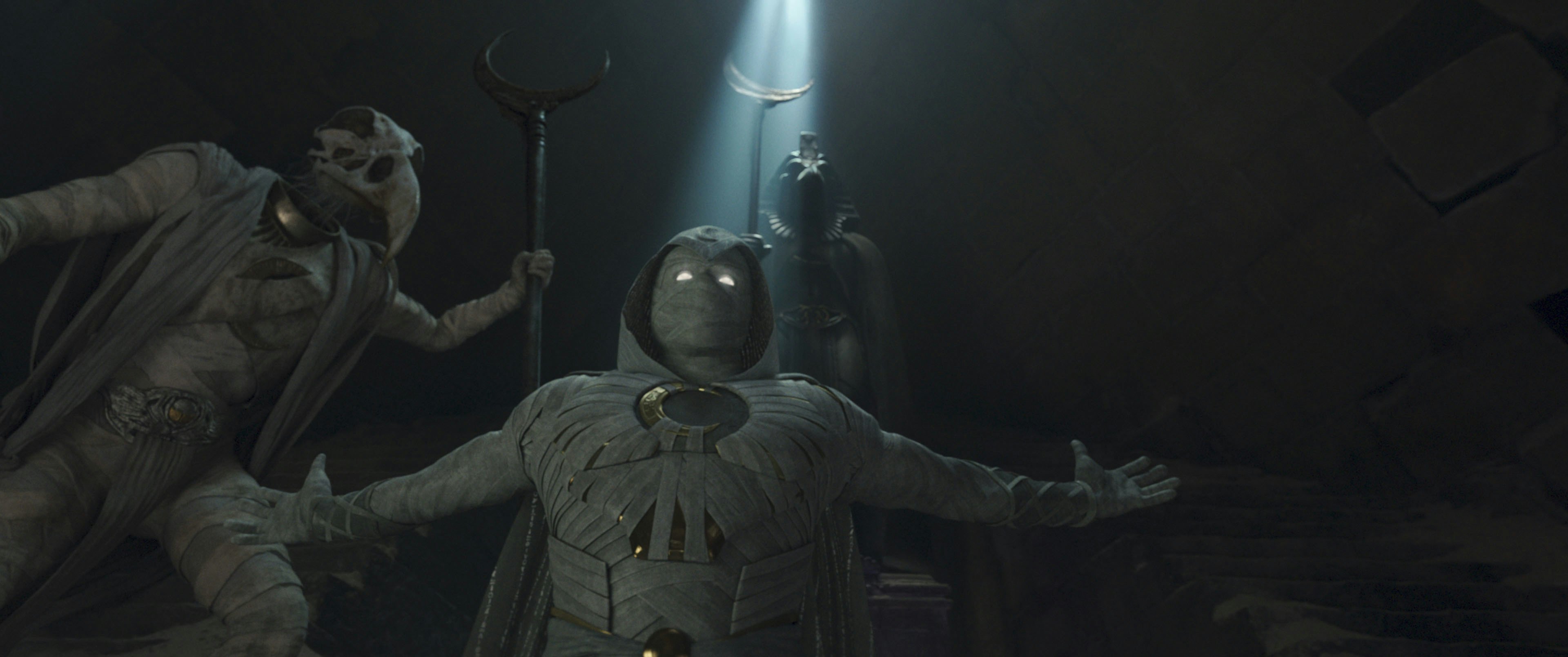
The MCU is packed with heroes audiences fell in love with the moment they met them. But Jeremy Slater was finding it hard to love Marc Spector.
“I went into a deep dive and read hundreds of Moon Knight comics,” the head writer of Disney+’s Moon Knight tells Inverse. “The problem I kept running into was, I didn’t necessarily like Marc Spector as a character.”
A mercenary chosen by the Egyptian god Khonshu to be his crusader, Marc Spector is the core ego of Moon Knight, created by Doug Moench and Don Perlin in 1975. The character almost made his television debut 16 years earlier for the short-lived Blade: The Series before finally appearing on Disney+.
“The idea of doing Moon Knight as a mystery show felt more creatively interesting and exciting than having the traditional giant exposition dump.”
In the comics, Spector adopts two alter egos to infiltrate different elements of society. When he has to rub elbows with the rich, Marc becomes millionaire Steven Grant. But when he needs to traverse the underworld, he dons the cap of New York taxi driver Jake Lockley.
These were originally just cover stories, but in 1988 an issue of West Coast Avengers started down a long road that would end with Marc Spector being diagnosed with dissociative identity disorder (DID). Slater says the series was designed to feature Moon Knight’s mental illness, as Marvel czar Kevin Feige felt it would differentiate the project from other mainstream superhero shows.

But to ensure Moon Knight could actually take flight, Slater says he had to rethink the character entirely. That meant remapping how Moon Knight’s personalities manifest and avoiding comparisons to a certain other caped crusader.
“Marc was always sort of defined by his trauma, and as a character, he doesn’t fit with the rest of the MCU,” Slater tells Inverse. “The MCU is built on characters we fall in love with very easily. How are we going to take audiences on that journey with a trained killer tortured by his own psyche?”
Slater eventually found a solution to the Marc Spector dilemma: To start by not telling the story of Marc at all.
Meet (the new) Steven Grant
In the comics, Steven Grant is a playboy, a cover story that enables Marc to gather intel. But that’s not the Steven Grant that MCU fans recognize.
At the start of Moon Knight, Grant is a bookish museum gift shop employee. He likes to leave voice messages for mum, and he’s hoping his next date will land him a girlfriend.
“I don’t know how to write a version of Marc audiences love from the jump, but I know how to write a Steven Grant,” Slater says. “I know how to write that lovelorn puppy dog searching for his place in the world. I can make you fall in love with Steven and make you feel he is the central protagonist.”

Slater saw Marc Spector as Steven’s silent guardian, “the guy keeping this puppy from wandering into traffic.” Slater worked under a theory that positioning Marc this way would allow audiences to accept Marc “because he has the same goals as us,” regardless of his past as a hired killer.
“A thousand things changed about the show over development, but that focus on Steven from the beginning never wavered. Everyone felt like it was the right way to go,” he says.
Altering Steven Grant also allowed Moon Knight to step out from under the shadow of another vengeful vigilante. “There have been times in his comic book past where Moon Knight sort of felt like Marvel’s answer to Batman,” Slater says.
“I came on board and pitched, ‘Let’s make Indiana Jones and The Mummy.’ Let’s get gods and monsters and make this big globe-trotting adventure show.”
Between the affluent persona and Moon Knight’s own garage of vehicles, faithfully recreating the comics would only encourage more comparisons with the Dark Knight. Slater says, “If we tried to go toe to toe with Batman, we’re going to seem like rip-off artists.”
It was in everyone’s interests to double down on what made the mythology so unique. That meant focusing on both Moon Knight’s DID and the Egyptian gods, which was “fertile ground” the MCU hadn’t yet explored.
“I came on board and pitched, ‘Let’s make Indiana Jones and The Mummy.’ Take it away from the rooftop vigilante beating up purse-snatchers. Let’s get gods and monsters and make this big globe-trotting adventure show,” Slater explains. “That’s the way we separate ourselves from the Batman comparisons.”

Suiting Up
Another tweak to Moon Knight was the idea that different costumes manifest through different personalities. This allowed the series to use both the classic costume and a newer one: Moon Knight in a bespoke suit, nicknamed “Mister Knight.”
The costume was first imagined by artist Declan Shalvey in the 2014 run of Marvel’s Moon Knight.
According to Slater, Moon Knight was originally going to have the Mister Knight costume given to Marc Spector. “In my head, it made more sense for Mister Knight to be Marc’s because in the comics he was the more brutal, efficient, violent Moon Knight.”
That would have made the classic hooded costume Steven’s to wear. But the writers were committed to ending the first episode in the museum bathroom, where Steven is cornered by the jackal monster.
“You can’t have him call Dracula a ‘fucking nerd’ on Disney+.”
“That was locked in stone from the first pitch meeting,” Slater says. “Problem was, if the first time he’s suiting up is the first time you’re seeing him, and if it was Mister Knight, it didn’t feel right. It didn’t feel as cool. We wanted that moment with him, in the cape, towards the camera.”
It was Feige who suggested switching the costumes. “I think he was right,” Slater says. “A lot of hardcore Moon Knight fans were like, ‘That’s not my guy.’ I agree. But you don’t want your guy to be perfect out of the gate because there’s no room for him to improve. We knew we would have Mister Knight kicking some ass, and my plea to the fans was, ‘Just wait.’”

Moon Knight, Meme God
One of the oddest elements of Moon Knight is that while he isn’t a well-known Marvel superhero, he is viral on the internet.
As chronicled by Polygon, there are dozens of widely shared panels where Moon Knight curses as he demands money from Dracula, among other amusingly Photoshopped adventures.
“We knew going in that the character was inherently darker,” Slater says, “The show couldn’t have the tone of an Ant-Man.”
“There have been versions of Moon Knight where he’s sawing off Bushman’s face while Bushman’s alive.”
But being on a major Disney platform, they had to play within PG-13 rules.
“There were things that fans really wanted to see, some memes brought to life,” Slater says. “You can’t have him call Dracula a ‘fucking nerd’ on Disney+.”

With a new background for Moon Knight, Slater believes the widespread shift away from origin stories is indicative of the superhero genre’s growth.
“We’ve seen so many origin stories at this point, they have become a trope in and of themselves. To keep the audience guessing, you have to show them something new or come from a fresh angle. I think the direct one-to-one translations just don’t feel special anymore.”
However fans feel about Moon Knight’s adaptation to the screen, Slater is happy about the end result.
“We hit the target we were aiming for,” he says. “It feels a little darker than what you may have seen from traditional MCU, but not so oppressive that a family can’t watch together. There have been versions of Moon Knight where he’s sawing off Bushman’s face while Bushman’s alive. If that’s the version fans were hoping to see, they were always in for disappointment, but I feel good. We managed to make it a little scary and a little weird.”
Moon Knight is streaming now on Disney+.







